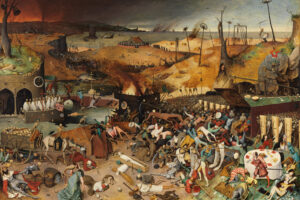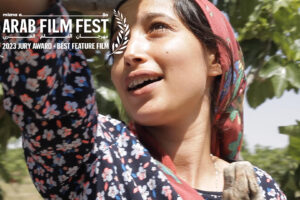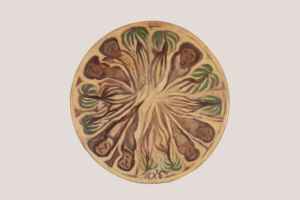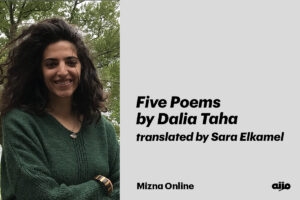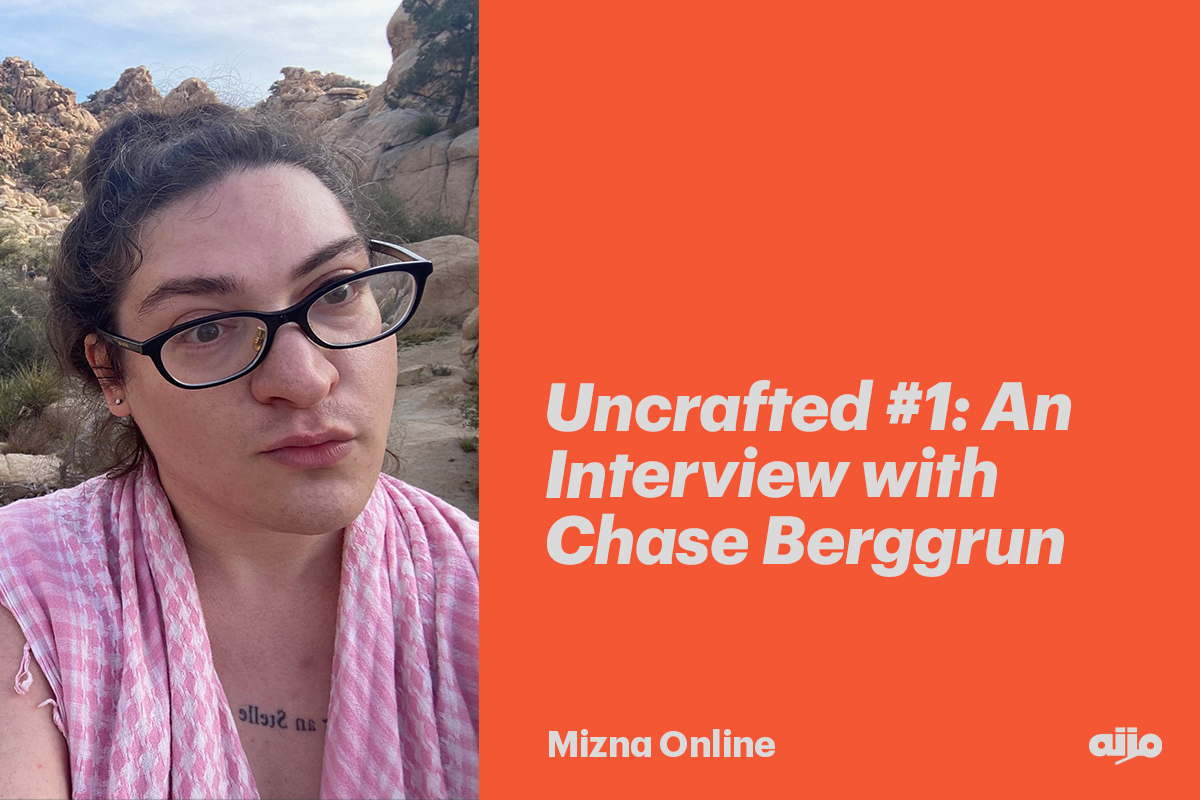
June 19, 2024
Uncrafted #1: An Interview with Chase Berggrun
In December 2023, I was honored to share a proverbial stage with Chase in a reading for Gaza in Brooklyn. Rather than sharing her own work, which I adore, she chose to read from Raúl Zurita’s INRI, linking the Chilean poet’s writings on his country’s fascist years to the ongoing genocide in Palestine. As Chase astutely put it, however, that link was by no means metaphorical: the Israeli state economically and militarily supported Augusto Pinochet in his campaign of terror and repression, a hardly exceptional policy for a fascist settler-colony that was also a key ally of the white supremacist South African Apartheid regime at the same time. Since the genocidal escalation began in October, many cultural workers in the United States and other countries in the imperial core have scrambled to figure out what our language is worth in the face of such horrors. In addition to her tireless work with Writers Against the War on Gaza, Chase’s invocation of Zurita and Chile is a necessary reminder that the fight against Zionism has always been a fight against imperialism, fascism, and white supremacy across the world.
– Hazem Fahmy, Uncrafted Column Editor
HAZEM FAHMY
What is your relationship to “craft” as a term and concept? In what ways have you encountered it (institutionally, pedagogically)?
CHASE BERGGRUN
I started reading poems when I was thirteen, and I was really autodidactic. I learned how to write poems by reading poems. And when you read a lot of poems—constantly, every day—you learn how to pick up intuitively the kinds of things they teach you to notice in school. I instinctively learned a lot of different elements of “craft” when I started writing, and then later on learned all the terms for them.
There are so many different ways to talk about how a poem works, and so many different metaphors. But, in certain contexts, thinking about a poem as a machine can be really useful. Looking at a poem, and asking: how do the different pieces of this poem operate together? I love thinking about the intricate ways a really good poem produces emotion. The way that I like to think about craft is on a reactive level: how did this poet manage to do this, to produce this feeling? There is certainly value in analyzing a poem from a cold, academic perspective. But I think that value evaporates when that’s the only lens a reader uses to approach the work with which they’re engaging.
HF
What were you reading?
CB
The poet who made me want to start writing poems was Vladimir Mayakovsky. There was a poet-in-residence at my middle school, and she had this tiny little desk in a tiny little library where I spent most of my time. One day, I found a poem in a book of Mayakovsky’s open on her desk, “A Cloud in Trousers,” and the thing that struck me the most was this unbridled emotion. In the poem, Mayakovsky is stood up by this woman who he’s in love with and who’s married to someone else, and his reaction is to explode onto the street. But as a child, I was awed by the vivid lack of restraint, this chaotic, wild, beautiful, and complex outpour of feeling, which was something that I didn’t have a lot of access to. And I discovered that language could open that door for me.
Mayakovsky and the other poets of his generation, his ilk, the Russian Modernists, had this really beautiful synthesis of emotional sincerity and intensity with political necessity and urgency. Mayakovsky himself was a propagandist, an agitator. Stalin called him his favorite poet (and then likely killed him—or instigated the conditions that led to his suicide). But for me, the ways in which poems allow a reader to access feeling, I think those are also the ways in which poems are really useful political tools. Because a poem does not allow politics to be disentangled from the material reality of feeling.
HF
When I talk to a lot of poets who view their relationship with poetry as politically committed, there’s often the sense that what you’re describing is stifled in a lot of classrooms. Do you feel the same way? And what did that look like for you?
CB
Well, first and foremost, in America, we can thank the CIA (the Iowa Writers’ Workshop, the MFA program, “show don’t tell,” etc) for this very intentional disconnect of politicality from cultural production. There’s also the French “poésie pure,” the idea that a poem or a work of art needs to be concerned only with questions of “beauty.” It is in the best interest of the people who created these kinds of classroom environments, the people who invented “craft,” to distance poetics from politics because of their own particular political positionality. White men are much better served by poetry that is only focused on these lofty abstract questions of beauty and truth. But I also feel strongly and see widely that those monoliths—both the writers that are taught and the way that they are taught—are beginning to fall away.
HF
And it’s very pertinent that we’re talking about this now, when a lot of student encampments for Gaza at American universities have been violently suppressed. This moment has revealed this mind-boggling dissonance in the neoliberal university where, on the one hand, what’s left of the humanities and the arts, the people who control them and fund them, have these very lofty and overdetermined ideas of what they can do.
CB
And what they can’t do, as well. The idea that the classroom was ever a de-politicized space in any way, shape, or form—I don’t give a fuck what class is being taught inside of it—is just simply untrue. As we know, everything is political, right? But a classroom space is especially political. Education is political: who gets to learn? Who gets to teach? What is taught? These are all wildly political questions.
HF
Yes. And there’s often this really silly assumption that because you can’t as easily follow the money in the humanities as you can do with STEM—in the sense that it’s easy to understand the politics of the Lockheed Martin-sponsored lab at an elite university—that means it’s somehow less political, which obviously, it’s not and never has been.
You mentioned that your relationship with writing began autodidactically. How did that relationship change when you encountered poetry in a more formalized or institutional setting?
CB
The teachers and professors I encountered who most influenced and shaped my own poetics were poets who were themselves deeply interested in questions like: what does a poem mean in the world? John Murillo and Martín Espada were early teachers who had a real impact on me. Espada is, of course, a great Puerto Rican political poet whose poems are emphatically concerned with the lives of people and the systems that organize, disorganize, and oppress them. I tried to seek out teachers whose conceptions of poetics felt engaged with the living world. And then the ones who didn’t did not have very much to offer me.
HF
I think we would all benefit from having that kind of clarity on what we’re seeking. From my experience, those teachers can also really harm your thinking and hold it back.
CB
Yeah! One of the primary purposes of a teacher is to teach you what to read. Not even necessarily how to read it. But Martín, for example, introduced me to this wide universe of Latin American poetry, a poetics that is so deeply, fundamentally, and materially engaged with struggle, with politics, and with political organization. Poets like César Vallejo, Gabriela Mistral, Pablo Neruda, Nicanor Parra, Eduardo Galeano, Delmira Agustini, Ernesto Cardenal, Alejandra Pizarnik, José Martí, Nicolás Guillén, Julia de Burgos, and Raúl Zurita, of course; all of these poets for whom writing happened in concert with revolution. Che Guevara wrote poems! They’re middling, but he read poems voraciously. I was exposed to this different kind of poetics that wasn’t circumscribed by American sterility, by this emphasis on removing the conditions of life from the pool of acceptable subjects.
HF
You mentioned this term “engaged.” What does that look like to you?
CB
For example, Martín was a tenant lawyer, an organizer, someone who was himself deeply engaged in politics. And having that modeled for me was really important. Especially in the last seven months, the idea that someone could just be a poet, or just be an artist, and that’s all, the only thing they do—it has seemed so hollow to me; the idea that the work itself can be disarticulated from one’s work in the world. I’m not saying that every poet needs to be an organizer. But I do think a poet has a responsibility to engage with the world that they exist in and the conditions of that world.
HF
It’s interesting seeing how much the last few months have revealed the absurdity of that belief, that the work on the page can be separate from reality, whether in the writing sphere or in academia.
CB
The idea that even speaking out is too risky. Even using the one tool at your disposal, your language! People are unwilling to even go that far. It’s one thing to be unable, for whatever reason, to be a body in the streets. But if you can’t even say “Free Palestine,” I’m not quite sure what your words are worth.
HF
Before we get into Zurita specifically, I wanted to ask you if there are other writers, contemporary or past, that you look to when thinking about what an “engaged” work means.
CB
The Russian Modernists, this particular slate of pre- and post-Soviet Writers, Mayakovsky, Marina Tsvetaeva, Anna Akhmatova, Boris Pasternak, and Velimir Khlebnikov. Latin American political poets. Black liberatory writers from around the world. The Négritude writers. And the Arab world, and Palestine. The thread between these groupings of poets, for me, is this kind of engagement and urgency. My favorite poet is Paul Celan, who was a Holocaust survivor, and whose experience with fascism shapes the very nature of the language that he writes.
Language is a paltry tool. It can so very rarely come close to accurately describing a feeling or a situation or an image. But it’s very much all we have. It’s all I have. The poets that captivate me most have tended to be poets who are deformed by systems, by repression, by fascism, and, in turn, are forced to deform language itself, which I think is very much a project of Raúl Zurita’s poetry. Not just to deform language, but to deform landscape, to deform God. To reinvent, and recreate, and reimagine a world.
HF
In terms of language being a tool, a phrase that has come up a lot in contemporary, broadly leftist, American writing circles, and especially since October, is this idea of writing “against.” Against empire, against capital, against war, etc. What does that look like for you in terms of how you use language?
CB
Something that I’ve been thinking about a lot recently is risk. I think it can be insufficient to simply elucidate power. I think it can be often incredibly useful to elucidate power, for sure. But merely pointing out the presence of a problem does not always change the substance of that problem. The work that I’m most interested in lately is work that wants to refuse the rote patterns of “againstness,” to find new ways of mutilating the systems that it addresses. It is a larger task for a poem to approach anything like a cure for that, for sure.
But I think what poetry offers is a release from having to think inside the bounds of certain kinds of intelligibility, and to make space for possibility, for potential, for the future, and for previously impossible paradigms of approaching the question as a cure. Celan refers to a poem as a kind of handshake; a moment between a reader and a writer where they touch even for this small speck of time. And he writes about this particular kind of space that the poem offers that makes room for question, that disavows staying within rationality. Imagination, first and foremost, is the tool of politics, and I think that poems have something really concrete and useful to offer to that route.
HF
This is a really good segue back to Zurita.
CB
Yeah! The agency that Zurita gives the natural world, it happens throughout every book of Zurita’s. And not just every book, but every poetic act. Because Zurita’s work has not limited itself to the physical page but has exploded onto the world in these really large-scale, incredible ways. In INRI, there’s this really intimate, one-to-one connection to the landscape to the grief, and struggle, and possibility of Chile. This insistence that the land is an actor in the political life and struggle of his country. This idea is written into every line of the book.
In an interview, Zurita writes:
“The struggle in Chile was not for the words, but rather for their meaning. What does the word homeland mean? What does the word Chile mean? It means what the military wanted it to mean. What the fascists wanted it to mean. The landscapes of my country are mine. And they are mine, because they are built through poetry. Poetry created those meanings. From that point is from where the landscapes emerge. They are creations of art, fundamentally built from words. So the landscapes moved me first as such, and also well, these landscapes were the only compassion, the only thing that received so many bodies dropped from planes, crushed bodies thrown to the sea. That sea is also the sea of our dead.”
In Chile, the violence of the Pinochet regime was spread across those landscapes, across the mountains, the deserts, the sea, and a huge part of Zurita’s project is to refuse this natural world as a graveyard for the regime. And so, in so many of his projects, he endeavors to return language to the land. The phrase, “ni pena, ni miedo,” (neither shame nor fear) is bulldozed into the Atacama desert. It’s two kilometers long. He did a skywriting project over New York City in the 70s, of his poem, “La vida nueva:” “My God is hunger. My God is snow. My God is disillusionment.” He commissioned a plane to sky-write his poem over the New York City skyline. He had poems projected onto the mountains in Chile. His projects have really fundamentally made this connection between the poetics of resistance and returning an agency to the land that allows the land to resist with the people.
And I think there are so many connections one can make there to the relationship with the people of Palestine with the land of Palestine. The land has always been enormously central to the Palestinian struggle. And the poets of Palestine have unfailingly connected their struggle with that relationship.
HF
Absolutely, and, just for starters, this idea of thinking of land as an agent in response to a fascist regime is so powerful because the very logic of capital, of which fascism is the ultimate, unhinged form, is total domination over land. Total control, total extraction.
CB
And the land abhors that. We can think of guerrilla revolutionaries in Latin America, Fidel Castro and Che Guevara in the jungles of Cuba, and the ways in which resistance co-conspires with the land. Always, the people who know their home are so much more able to defend it. The success of the Vietcong in the war was due to their intimate knowledge of the land and the place in which they lived. An invader, or an outsider, or a colonizer cannot win against the land. The only way to “win” is to destroy the land. 70 percent of Gaza has been fucking bulldozed.
Forced disappearances, which are also a staple of many fascist regimes, are certainly happening in Palestine constantly, and have been for generations. But now in particular, with imprisonment and disappearances. They are such a central node of grief in INRI and throughout Zurita’s work because it’s worse than killing a person. A forced disappearance creates this imposition of a violent hope for the people who are left behind, where they are unable to grieve. The particular horrors in Chile, the dropping of bodies from airplanes and into the sea, the destruction of bodies in the desert with explosives, people whose names were not written down, who were not kept track of, who are gone, but are not allowed to fully be gone because the question is allowed to remain as to their survival—it’s horrifying. And what I love about this book is that it allows the land that received these people to speak, and to grieve, and to move, and to house the dead in a different kind of way. It’s a long elegy. And elegies are important. They are political. They allow us to move with and around and through our grief. They are a kind of gift.
HF
As obvious from the title, faith is essential in the book.
CB
The word “INRI” also shows up in Purgatorio. There’s this line: “like mirages and auras, the INRI is in my mind, the desert of Chile.” Christ for Zurita is this figure of fascination, because of his own experiences of torture during the coup in 1973. Throughout Zurita’s work, Christ appears as this hallucination that blends the character of Christ, the suffering deity, with the desert itself, and with the land itself. The land is marked, humiliated, and mutilated by the regime. And the suffering of the land connects to the suffering of the people of Chile, and they become one.
I have this fascination with Zurita’s faith in spirituality because it’s deformed, in the wake of his experiences of torture. He has to revise his relationship to an abandoning God. And the locus of that revision is physical space like the desert, the sea, and the mountains; the stage on which Christ is refigured. Another line from Purgatorio: “So that my form begins to touch your form, and your form, that other form, like that, until all of Chile is nothing but one form with open arms, a long form crowned with thorns.”
Christ’s suffering is also revolutionary; Christ as a figure of rebellion against repressive spiritual and political structures. Christ’s sacrifice as an act of refusal. I think all of these things are highly potent in the way that Zurita connects to his experience of spirituality. The thing that I really love about INRI is that you can open the book, and it is often saying the same thing over and over again. Very often, there’s just pure repetition. But the lines are incantatory, they do not particularly shift in form. It’s a litany, in a very religious sense:
“and it will be you again, and I just another view of yours, and my eyes as they rise from you, will show you down below a country of beaches, and the beaches the bones of you which I have been, the teeth of you which I have been the murdered dead face of you which I have been in which rising up from the empty craters of your eyes showed you the bones of my face changing little by little into yours, and it will be you and the beaches rising up will be you, and the ocean rising will be you because my love is you, and the depth of my love is you, and the dead beach that begins my life again rising up to the resuscitative beaches of your life, it’s you also.”
The way that the “you” functions is so wildly open. It’s a “you” that is an “I.” It’s a “you” that is the reader. It is a “you” that is the dead. It is a “you” that is the land. Zurita refuses to disambiguate his address, and so forces the reader to grieve and to feel along with themselves and the poet, and the land, and the dead.
HF
This repetition also intersects with the visuality of the books.
CB
The image is really critical to a lot of Zurita’s work. We talked about his large-scale poetic artworks, but also this is a good segue into talking about CADA (Colectivo Acciones de Arte). After the coup, Zurita was a foundational member of this collective of artists resisting the Pinochet regime. For them, the artistic image and writing of poetry were intimate acts of resistance. They were engaged in using the written and the visual form as direct action. One of my favorite campaigns of theirs was this graffiti campaign, “No más,” where they would write this phrase, “no more,” across cities in Chile, and allow the people who lived in those cities to fill in the blank; an interactive form of both artwork and resistance that made space for the people.
They dropped leaflets about the relationship between art and society from aircrafts over different cities and towns. They sent milk trucks from a dairy factory to the National Fine Arts Museum. They staged hunger strikes inside metallurgical factories. They invited citizenry to join them in conceiving of the city as a museum, society as a collective of artists, and thus artwork. I’m here referencing a piece by Carlos Soto Román, in jacket2, the idea being to conceive of life as a work of art which can then be corrected or revised.
Working with the organization I’m a part of, Writers Against the War on Gaza, has been illustrative of both how defanged artists and writers in this country have become, and also how possible it is to resist. How we as writers can use the skills that we have when we refuse to function as mouthpieces of the state, because the state is a written document. How, in fact, it is quite possible and necessary to revise that document. And by refusing these economies of risk, career, limitation, and fear, we can actually do way more than we’ve been told we are able to.
What we’re seeing right now is a glimpse of possibility. Despite what we’ve been told, we do have the agency to rewrite and restructure the academy. But the only way forward is to burn down or occupy the physical space of the academy. Throughout this period of time, I have never felt more disgusted with the systems and institutions of poetry. But I’ve also never felt more hope and possibility about the poem itself, about the role of the poem, the poem’s inherent connection to the act of struggle; the act of resistance as a tool of writing, rewriting, and reimagining a future horizon in which Palestine must and will be free.
This interview has been edited for brevity and clarity and represents the first in a new interview series Hazem Fahmy is editing with Mizna Online titled Uncrafted, exploring intersections of literary craft and anti-imperial thought.

Chase Berggrun is a trans woman poet, educator, and organizer living in New York City. She is the author of R E D (Birds LLC, 2018) and the chapbook Somewhere a seagull (After Hours Editions, 2023). She will see a free Palestine in her lifetime.

Hazem Fahmy is a writer and critic from Cairo. A PhD student in Middle Eastern Studies at Columbia University, he is the author of three chapbooks: Red//Jild//Prayer (2017) from Diode Editions, Waiting for Frank Ocean in Cairo (2022) from Half-Mystic Press, and At the Gates (2023) from Akashik Books’ New-Generation African Poets series. He is a Watering Hole Fellow, and his writing has appeared, or is forthcoming in The Boston Review, Prairie Schooner, Mubi Notebook, Reverse Shot, and Mizna.





